This year’s Automotive Logistics India conference came at the end of a tough year for the domestic automotive market. But the downturn has not prevented manufacturers from striving and investing to improve speed and flexibility in their supply chains.
Report by Christopher Ludwig and Zoë Apostolides in Pune
It was not supposed to be this way in India. The promise was so vivid, the ambitions to deliver so great. Three years ago, at the Automotive Logistics India conference in Chennai, the passenger vehicle market had jumped by nearly one-third over the year prior, with sales around 2.5m units and production hitting 3m units. Heavy-, medium- and light-commercial vehicles (HMCVs and LCVs) production was also up around 30% year on year to 590,000, humming along in line with the country’s breakneck GDP growth.
The industry’s supply chain was struggling to keep up with the expansion in production and vehicle distribution, but was full of possibilities for improvement and to create more valuable services. Forecasts at the time predicted that passenger vehicles sales could surpass 5m units by 2015, particularly as a rising middle class eschewed motorbikes and bought family vehicles. Sales in 2020 were forecasted to reach between 7m-9m units.
Also in that year, India’s government finance minister put forward plans to replace the country’s complex web of state, inter-state and central government duties and excise taxes – many of which double up on each other – for a standard rate for goods and for services (the ‘GST’) that would eventually come down to 16% between central and state tax.
Three years later at the same event in Pune, some parts of the industry seem to have been caught in standstill Mumbai traffic, having barely nudged forward at all. After two years of low-single digit growth, passenger vehicle sales have fallen by about 5% in the last six months of the current financial year. LCV sales have dropped by 12.5% and HMCV by more than 27%. Only the two-wheeler market is seeing steady growth.
Meanwhile, there has been no progress at all for the GST, with a weakened government unable to push through change. The sector seems unlikely to get a boost or see policy until after the Indian national elections, expected to be around May or June 2014.
The longer-term forecast for India’s vehicle market has also been downgraded significantly – Roland Berger Consultants and IHS Automotive don’t see passenger vehicle sales reaching 5m units now until 2020.
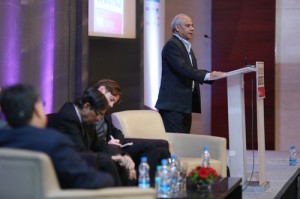
“Many are switching to survival mode. If you talk to them about preparing for 2020, they will say that today is what matters more,” he said.
Jasjit Sethi, chief executive officer at India’s TCI Supply Chain Solutions, pointed out that the market had been building production and logistics capacity during India’s boom years, and that now the supply chain was suffering a bullwhip effect.
Rajiv Bajaj, principal at Roland Berger Strategy Consultants, said that the new word in India was ‘VOCU’ (volatility, uncertainty, complexity and ambiguity). “We have been used to growth in India, and to managing all the typical challenges that come with creating capacity and hiring people,” he said. “It’s a new challenge to deal with so much uncertainty.”
The promise remains the same
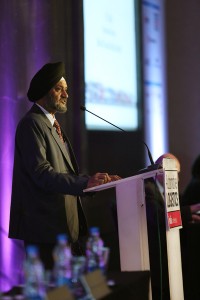
“Integrating the supply chain is essential to meet customer requirements and fulfil demand in the market,” he says. “By building up various PDCs and VDCs, the idea is to move the lead time from days to hours.”
Ford is also currently building a new engine and assembly plant in Sanand, in the western state of Gujarat, which its management has said will export 50-60% of production. Ford’s supply chain operations in India have been transformed by the sale and production of global models that are also built in other regions, according to Amlan Bose, vice-president of material flow engineering, logistics networks and export operations for Asia Pacific Africa at the carmaker. Such production and distribution have led to an increase in complexity and global material imports and exports.
“The game has changed even more since we started to build the Ecosport [in Chennai], which we will be exporting to more markets,” he said.
Ford and other carmakers are strengthening their logistics networks and operations to manage the increasing complexity that accompanies such global products. On the aftermarket side, for example, Ford will implement a large suite of systems for inventory and transport management, which will integrate forecasting, order, inventory and transport management across the 600 suppliers and 450 destination points the carmaker has for India. The system will automate many processes, including the bill of distribution and routing, according to Vinodha Jeyanthilal, director of supply chain management in Asia Pacific Africa at Ford Customer Service Division.
“This global system will make it easier to do business with Ford,” she said.
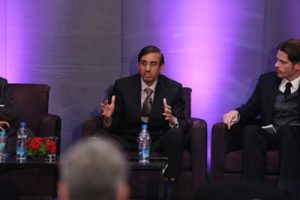
Another carmaker investing in its logistics is the Volkswagen Group. Sven Bockes, head of disposition logistics for the company in India, revealed that in 2013 the carmaker implemented a returnable packaging loop for its plant in Pune. The system includes more than 133,000 containers worth around €6m ($8.2m), which Volkswagen owns directly, and involves 73 of the carmaker’s 91 Indian suppliers.
“We have a transparent accounts system with each supplier to track our containers, and we’re confident that our loss rate and transport costs will decrease,” said Bockes.
Logistics providers are also continuing to invest and increase their presence in India. Among the notable developments has been the entrance of APL-Vascor as a joint venture in the market, and its efforts to increase the use of rail for vehicle logistics in India. Following a change in Indian rail policy, APL-Vascor has joined Maruti Suzuki in gaining permission to invest in equipment. The company has designed an automotive-specific wagon for the market, as most of the current equipment used for rail in India is either converted passenger wagons or containers.
And while the drop in sales has certainly delayed progress in some areas of logistics, most executives were keen to treat the downturn as an opportunity to improve the efficiency of their operations and to reduce waste rather than to give up on the promise of India becoming a world-class automotive logistics centre.
“Currently the market situation may be tough, but we strongly believe that the long-term story is in tact,” said Kalsi. “Efficiency improvements and innovation will go a long way towards helping us when the good times come again.”
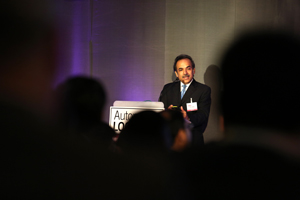
India’s economy and automotive market have been hurt by a number of macroeconomic issues as well as political wrangling. GDP growth, which was growing 7-8% per year from 2010 until around the middle of 2012, has slipped beneath 5%, while industrial production across the economy moved into negative territory in November. The economy is struggling to cope with annual inflation of about 11%, and the high interest rates set by the central bank in response. A large fall in the value of the rupee has also led to food and energy price rises, along with other costs for manufacturers. The government is struggling to cut a growing budget deficit, while bureaucracy and corruption at both central and state official levels are thought to be holding back considerable amount of investments, particularly in India’s woeful transport infrastructure.
Rajiv Bajaj suggested that not much would happen before national elections in the middle of 2014, when the new government is expected to make moves to stimulate the economy. “Earlier forecasts had been expecting some sort of stimulus measures from the government to encourage sales, but now we don’t expect anything to happen for the next for four months or so,” he said.
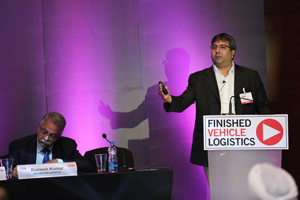 WWL's Gur Prasad Kohli pointed to the lack of progress over implementing the GST
WWL's Gur Prasad Kohli pointed to the lack of progress over implementing the GSTGet on your bike and ride (overseas)
But while the economy is suffering, there are a number of growth areas in the motor industry. The two-wheeler market in India, which is the world’s largest, continues to rise, up around 6% in the first half of the financial year. Roland Berger predicts that two-wheelers will grow at an annualised rate of 8-9%, rising from 13.8m units in 2013 to 25m by 2020. The market is so strong that Prem Verma believes that it is time that the automotive logistics industry does more to collaborate with the two-wheeler segment.
“There could be some transport routes or backhauls to share between parts and motorcycles,” he said. “Collaborating in logistics is not just transport – the automotive logistics industry could potentially learn something new from the two-wheeler segment.”
Another growth area this year has been exports, which have been helped by a weak rupee as well as continued interest from carmakers in turning India into an export hub. Bajaj said that the country is benefiting from its strategic location and ability to serve a number of emerging economies. “All OEMs desire India to be a hub for global car production: it has a geographically advantageous position as a the centre of several developing economies."
Passenger vehicle exports in the financial year are up close to 10% so far this financial year, while LCV exports are up 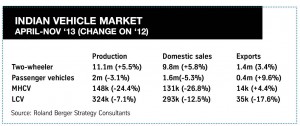 3.4%, according to Roland Berger. Passenger vehicle exports were 550,000 in the 2013 financial year, and could surpass 600,000 this year. Two- and three-wheeler exports are also up this year by 5%, on pace for around 2.3m units.
3.4%, according to Roland Berger. Passenger vehicle exports were 550,000 in the 2013 financial year, and could surpass 600,000 this year. Two- and three-wheeler exports are also up this year by 5%, on pace for around 2.3m units.
India’s biggest exporter is Hyundai, followed by Maruti Suzuki. But Nissan is close behind with 10% growth in the first six months of the financial year, while Toyota has also seen its exports rise by more than 30%. Ford expects to export globally from its new plant in Gujarat, including to Europe. Volkswagen has increased its exports, particularly of the Vento to Mexico.
“Although we have to work to reduce costs in everything that we do, I would say that we have a strong growth for exports that is supporting our plant capacity,” said Carsten Goransch, director of logistics for Volkswagen India. “We are planning to increase these export volumes next year as well.”
Strengthening the component supply chain
While the weak rupee is giving exports a boost, it is also hurting costs in the parts supply chain. According to Bajaj, imports as a source of automotive components have risen to 30% in India, compared to 22% in 2008. China is the leading source for parts imports to the country, representing 19.4% of the total, followed by Germany (13.9%), Japan (13.4%) and South Korea (12.8%).
However, exposure to currency risks has been encouraging manufacturers to source more components in India, giving a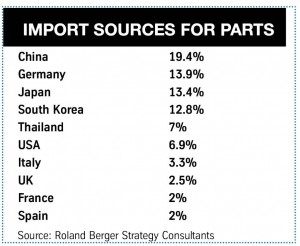 boost to the auto components sector. Sales for the sector have been growing at an annual rate of 15.7% for the last few years, although recent sales have also slowed. However, Sudhir Gupta, executive vice-president of supply chain management and chief central purchase at Tata Autocomp Systems, a tier supplier subsidiary of the Tata Group, said that the total components industry in India should rise to about $150 billion by 2020.
boost to the auto components sector. Sales for the sector have been growing at an annual rate of 15.7% for the last few years, although recent sales have also slowed. However, Sudhir Gupta, executive vice-president of supply chain management and chief central purchase at Tata Autocomp Systems, a tier supplier subsidiary of the Tata Group, said that the total components industry in India should rise to about $150 billion by 2020.
This outlook for the parts supply chain is part of a long-term outlook that is still bright, although less rosy than it was several years ago. Roland Berger’s forecast is for passenger vehicle sales to grow at an annual rate of around 9%, reaching 5m units by 2020. Commercial vehicles are also seen returning to 9% annual growth, expanding from 698,000 units in financial year 2013 to more than 1.3m in 2020.
More complexity and automation in the aftermarket
One area in which this growth will have a significant impact is the aftermarket, which is already rising more than the new vehicle market. With the added complexity of vehicles, part and SKU numbers have also been increasing. Manufacturers have had to scale their logistics networks to handle the higher part numbers as well as to meet customer expectations with faster lead times.
A good example of this complexity and scale in the aftermarket can be found at Maruti Suzuki, which has a 40% share of the passenger vehicle market and a 30m vehicle population in India, sending parts that service 1.2m vehicles per month, according to Kalsi. The carmaker has a huge, multi-tier network for spare parts, with more than 3,000 service locations between dealer workshops and service stations (some of which are small, mobile units), as well as 450 distributors. The company has committed to servicing cars in even the most remote of regions, such as those with high altitudes or those virtually inaccessible by road. Kalsi spoke of the sales achieved by mobile showrooms where cars are displayed at villages and in remote regions – of which the group has 600 standing workshops – so that connection and communication can still be achieved outside densely populated areas.

The parts move through 80 warehouses, while Maruti currently has two original source warehouses (but is building more, according to Kalsi). The carmaker is working to improve speed and visibility a network that is still largely fragmented, particularly by using a ‘hub-and-spoke’ model with larger PDCs to serve different regions.
“India is changing so fast. Today’s customers have access to all the knowledge about products and he wants everything at the speed of thought,” said Kalsi. "We have to explore what the customer actually wants: which will inevitably be the best product with the best service, at the highest quality and the lowest cost."
Other manufacturers are facing similar levels of complexity. Girish Bhobe, general manager of spares sourcing at Mahindra & Mahindra, revealed that the manufacturer’s service parts sales across the company’s automotive, two- and three-wheelers, tractor and commercial vehicle divisions have grown at an annual rate of 26%, with sales this year expected to be Rs2,000 crore ($321.7m). The manufacturer has 58,000 SKUs in its aftermarket inventory from 700 suppliers, with a network of 500 dealers and more than 10,000 retailers. To help manage this complexity, he pointed to the need to improve forecasting and communication in the supply chain.
Ford’s global software system

One of the most significant developments for aftermarket is Ford’s IT implementation, which will give the carmaker’s spare part network significantly higher levels of visibility and automation. “This system will integrate all of the country’s operators onto a single software platform for forecasting and inventory planning,” said Vinodha Jeyanthilal.
She pointed out that up until now, the carmaker’s software and communication processes for the aftermarket have been very manual, even though Ford had already put in place more automated systems for inbound production parts logistics. She pointed to the use of email and spreadsheets for scheduling and supplier communication. As part of the system rollout, Ford will move more of its suppliers onto EDI so that orders and confirmations can be sent automatically.
Some of the system’s main features include a centralised forecasting across all of Ford’s part depots, along with an automatically created bill of distribution. Transport and routing will also be determined by the system. “We expect that we will be able to carry less inventory as we better integrate the supply chain,” said Jeyanthilal.
India’s parts inventory will also be visible across Ford’s global network, as carmaker is already exporting parts globally and in particular within the Asia Pacific Africa region. “That will be increasingly important as India becomes more of an export hub for Ford and we’re moving vehicles and service parts around the world,” she said.
Supplier development and localisation
The push to localise more parts and develop further the Indian supply base was a common theme among a number of manufacturers at the conference. Viswanathan Ramesh, senior vice-president for manufacturing at the Toyota Kirklosar joint venture, revealed that its import ratio of parts was above the average 30% rate in India. “We have a huge localisation programme now, partly because of the currency costs but also because of risk and logistics,” he said.
Hyundai Motor India’s Venkataramanam Baskaran, senior manager for knockdown kit support, said that the carmaker imports about 23% of its supply chain, or 5,866 different components. This volume amounts to 150-200 containers per week. The carmaker can only process about 35-40 containers for customs clearance each day, so it runs a priority system for moving the most urgent parts from the port to the factory. The carmaker has an in-plant yard at its factory in Chennai with space for nearly 580 containers.

“Forecasting is also very difficult for the import chain,” he said. “We have parts coming from the US that move across the country and then from California to the port of Chennai via Singapore, so with a lead time like that you need to do forecasting 5-6 months in advance, which we do in those cases. But it is not very accurate.”
Volkswagen India has also been increasing its local parts sourcing. According to Sven Bockes, the supply chain for the carmaker’s Pune plant is now 79% localised in India, with 11% of parts coming from China and 10% from the rest of the world. The carmaker imports more than 1,800 CKD parts, while directly importing 88 parts.
A number of carmakers pointed to supplier development programmes that helped improve quality of operations and logistics with local suppliers. “We are running supplier development programmes to help improve quality and to localise more parts,” said Toyota Kirklosar’s Ramesh. He pointed out that it was important to work with suppliers to make sure that they could really carry out the right operations locally. “We want ‘true localisation’ where the source parts are actually built in India and not abroad with the final warehousing or sequencing in India.”
Ramesh said that the carmaker has more than 30 KPIs that it monitors for suppliers – including quality, problem parts,

“Our on-time delivery rate must be 100%. On that there is no compromise,” said Ramesh.
It is not just the international carmakers that are focused on supplier development. Sudhir Gupta from Tata Autocomp Systems pointed to the importance of tier suppliers being able to carry out advanced design and engineering, while meeting production demands with zero defects. The pressures and pace are intense, he said, especially during launches.
“This is also in the context of long-term price agreements that stipulate year-on-year cost reductions,” he said.
With this in mind, Gupta said that it was essential to have an efficient supply chain with enough consideration for risk. The tier supplier has thus introduced a suite of e-learning kits, which are online computer tools intended to assist companies in areas such as lean manufacturing, logistics, procurement and quality. “We need skilled manpower and this is a way for us to help our suppliers and colleagues to improve,” he said.
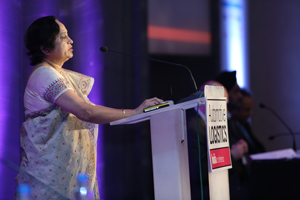
Speakers also cited the importance of building skills for drivers. Maruti Suzuki’s Kalsi spoke of the company’s 'driver-up gradation' programmes, which include driver training and motivation events. Similar training is also offered by the Automotive Skills Development Council (ASDC), which is funded by both the industry and the government. The ASDC has also attempted to bring together various different associations with the sector, including the Automotive Component Manufacturers Association the Society of Indian Automobile Manufacturers, and the Federation of Automobile Dealers Associations.
Alke Pande, advisor for the ASDC, pointed to the specific need to better train drivers in emergency handling and fuel-saving skills. She also pointed out that some drivers are wary about new technological systems that are being used increasingly in truck fleets, and that training was required to help them understand this technology better. According to Pande, logistics providers can affiliate with ASDC to gain access to the training suited to their individual companies.
Rail is for real
For finished vehicle distribution, there was a major focus on the use of rail, a transport mode whose potential is far from fully realised in India, accounting for just 2-5% of vehicle shipments. APL Logistics' Bill Villalon, vice-president for global automotive, said that his company had a "vision for rail in India" through its APL Logistics-Vascor joint venture – and that rail progress in the country is starting to become reality.
A major turning point for rail in India came earlier this year in May, when the Automobile Freight Train Operator (AFTO)
 Bill Villalon said that APL-Vascor will be bringing its double-decker wagons to the market soon
Bill Villalon said that APL-Vascor will be bringing its double-decker wagons to the market soonTwo licensees have emerged in APL-Vascor and Maruti Suzuki. High-capacity double-deck trains are now under fabrication, and should be in action in spring of 2014. "This is real, not speculative," Villalon said. "We are open for business."
However, Villalon admitted that innovations and further refinements are necessary. In the months and years to come, more collaborative logistics solutions will need to emerge between OEMs. "Everybody believes this will be a big business; the only issue is time," said Villalon. "Vehicle distribution centres will be built to bring us closer to a point of consumption. Cross-country rail is the way forward."
APL-Vascor’s journey to introducing a rail wagon in India has already taken several years. In November 2011, it started testing a prototype rail wagon designed specifically for India. It has taken a long time to move forward with stringent checks and approvals at every step of design, but Villalon said that the company was on schedule.
The prototype wagon, called BCACBM, has moveable decks that can accommodate vehicles of varying heights; it operates a manual lifting device, with perforated side panels and a perforated floor to make lashing easier. The fact that vehicles of many varied heights can be loaded was a deliberate design strategy, said Villalon, with the hope that multiple OEMs will make use of the wagons and thus reduce empty miles.
There will be 27 wagons to a rake, with a total capacity of 318 vehicles (an increase from current rakes in India, which hold 25 wagons and a much-reduced capacity of 125 vehicles).
With the rail policy in place, Villalon pointed to a number of factors that should increase the use of rail. With fuel prices increasing by more than 25% during the last year, he said the move towards rail was inevitable, even if the slow market might delay its uptake. The Indian government, he said, had little option but to eventually permit a "free float" of diesel prices, rather than subsidising them.
Another factor that could also increase interest in rail is the potential standardisation of vehicle transporter lengths. Currently, Indian policy on truck lengths is unclear, with the official length substantially shorter than the common trucks in use in the sector. If such regulations were enforced, it could create a 20% reduction in outbound logistics capacity. Villalon suggested that this uncertainty also increased the importance of a well-functioning rail market.
Clamping down on waste
Bill Pawluk, from Convertible Trailer Manufacturers (CTM), discussed the importance of reducing empty miles, and said that it was worth examining the sector in detail to discover what could be improved upon. He questioned the worth of specialised equipment which "can only do one thing", and asked why outbound and inbound logistics had to operate so independently from one another. Integration and increased communication would, he said, allow the assets of each logistics company to grow exponentially.
CTM has designed and built a finished vehicle trailer that can convert to carrying general freight, which Pawluk said has the ability to save the industry billions of dollars in empty returns. He pointed to studies that suggested 42% of over-the-road transport miles are logged with empty trailers. "We could use intermodal assets to our advantage," said Pawluk, "using combined loads. Why not ship both at the same time?"
 Achal Paliwal from Honda wants to see better service at ports
Achal Paliwal from Honda wants to see better service at portsSpeakers also raised concerns regarding the challenges of exporting cars effectively from India, which has been an important growth area for the industry given the weak domestic demand.
"The only way to grow is through customer exports," said Achal Paliwal from Honda Cars India.
But despite this growth, speakers lamented the state of ports in India. Ports capable of handling pure car carriers include JNPT in Mumbai, Chennai, Mundra, and Ennore. However, many of these are too small to handle large bulk, while the container ports are often heavily congested. Speakers called for more dedicated car carrier berths, better parking facilities and quicker PDI and pre-export preparation times.
Jitendra Goyal, deputy general manager for production control and logistics for Toyota Kirloskar, suggested that conditions at port with customs clearance needing improvement; he said it was not uncommon for drivers to wait 48 hours at a port to clear customs. He also pointed to the lack of the required hygiene standards at ports, as well as there being no obvious segregation between contaminated and uncontaminated products.
Poor inland connectivity amongst ports was cited as another stumbling block for exports from India. Many do not connect well to road and rail, while the distance between factory and port can be 1,500km or more. Paliwal pointed out that older ports are often located deep within cities and have entry restrictions. Lead times of up to nine days are not uncommon.
Paliwal said that he wanted to see more dedicated space at ports for finished vehicles and the services that exports
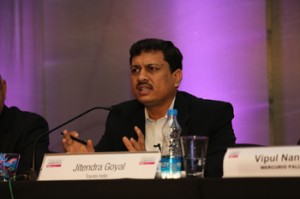 Toyota Kirklosar's Jitendra Goyal said it was common for drivers to wait 48 hours at ports to clear customs
Toyota Kirklosar's Jitendra Goyal said it was common for drivers to wait 48 hours at ports to clear customsAt private ports, however, tariffs are often extremely high, even if the infrastructure and services are better.
It was suggested that logistics providers and shipping companies need to come forward on port services and demand more shared facilities for pre-shipment preparation. WWL’s Kohli said that this would prove easier if OEMs entered into longer, more secure contracts with logistics providers across the board.
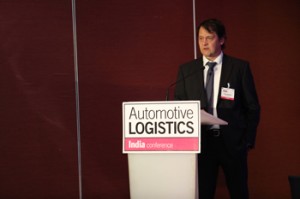 Sven Bockes said that VW India's container fleet in India was worth 6m euros
Sven Bockes said that VW India's container fleet in India was worth 6m euros Packaging was another area in which manufacturers in India revealed they were paying more attention. Volkswagen India’s returnable packaging concept, which went live earlier this year, currently includes 606 GLT and 617 KLT containers. In total, the returnable portion makes up about 85% of the carmaker’s packaging fleet, with disposable packaging making up the rest.
The containers move between Volkswagen’s plant and its participating tier suppliers. Of the 73 suppliers who are participating, Volkswagen had to train 59 of them in the returnable process. The carmaker has also created 330 online accounts to allow suppliers to book containers and to track their usage and return. “The ordering of the containers is based on the parts order schedule, and we track this carefully to minimise lost containers,” said Sven Bockes.
“The idea was to use a standard Volkswagen Group concept, with the same system used in Europe applied now in India,” he added.
Unlike many manufacturers in India (but again similar to its approach in Europe), Volkswagen has invested directly in its container fleet, rather than leaving suppliers to own it or leasing from a third party provider. “We take responsibility for creating the packaging based on our assembly line requirements,” Bockes said. “We have highly sophisticated processes within the plant and we want to make sure that we have the right packaging to support that.”
Colin Howard, sales director for RPS at returnable container provider Goodpack, discussed how his company’s returnable
 Goodpack's Colin Howard things OEMs need different returnable strategies for local suppliers and long-distance ones
Goodpack's Colin Howard things OEMs need different returnable strategies for local suppliers and long-distance ones“I would argue you need one strategy for your cluster suppliers, and another for long-distance suppliers. In our case, we can use the equipment for different commodities so we don’t have empty returns in the network,” he said.
Erasing history for a better future
As in years past, speakers expressed frustration at the lack of progress in some areas for logistics, such as the GST. Prem Verma, while acknowledging that the lack of clarity on the policy made things difficult, maintained that the industry should still prepare for the coming of the tax, which will allow for larger, more centralised distribution centres to hold stock for multiple states.
While India’s prime minister suggested earlier in 2013 that the GST could be implemented as early as 2014, the industry has grown accustomed to seeing such promises go unfulfilled. Nevertheless, speakers recognised that its introduction would reduce outbound supply chain costs with the rationalisation of depots and inventories, the use of more hub and spoke distribution, and multimodal logistics.
Sometimes, speakers conceded, economic downturn can be transformed into an advantage, in the sense that OEMs and logistics providers don't just do what they have done in the past, and instead direct their attentions to what can be done differently, and where best to find efficiency across the supply chain.
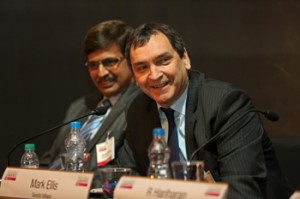 Mark Ellis from Geodis told delegates to forget their historic supply chains
Mark Ellis from Geodis told delegates to forget their historic supply chainsBoth Ellis and R. Hariharan, vice-president of BLG Parekh Logistics, highlighted the need to improve supply chain visibility in India. Hariharan suggested that manufacturers in the country should consider adopting ‘control tower’ solutions, whereby a logistics provider can monitor all tiers of the supply chain with an integrated IT system, and respond to any potential issues.
“A supply chain control tower can help eliminate the blind spots in material flow,” Hariharan said.
This focus on data was an important topic for the conference. Although all agreed that there would always be limits to
 R. Hariharan from BLG Parakh said visibility was one of the biggest issues in India
R. Hariharan from BLG Parakh said visibility was one of the biggest issues in India“As service providers we have to look at data to improve our service, routing and delivery patterns, for example,” he said. “We have to get even better at pulling this information together in India, where there are still so many ideas for improvement within the data.”
Partnering for ‘win-wins’
Finally, looking back over the perennial issues, Prem Verma bemoaned the lack of collaboration between OEMs and logistics providers. “Every year we say that we should do it, and we don’t. If it’s a downturn, we say that we must focus first on cutting costs,” he said. “When times are good, we say that we can’t sacrifice on quality and service.
“But I see a lot of potential, including the opportunity to share compounds and distribution centres.”
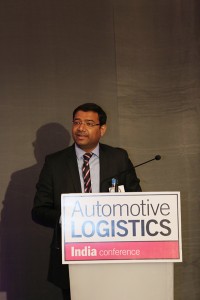 Ford's Amlan Bose said that the company would look for collaboration opportunities with Tata when it completed its factory nearby in Sanand
Ford's Amlan Bose said that the company would look for collaboration opportunities with Tata when it completed its factory nearby in Sanand“We’ve even agreed – although of course we haven’t promised this – that we would prefer to have the same logistics provider, as this would help us to collaborate even more,” added Prem Verma.
Volkswagen’s Goransch also said that the carmaker would be open to “win-win” collaboration opportunities, particularly as volumes and production increased. He also pointed to the potential for logistics service providers to add value and coordinate more consolidation of material or sharing of processes.
“We have recently signed a contract for Mahindra Logistics to carry out our in-plant
 VW's Carsten Goransch said the company recently signed a contract for Mahindra Logistics to provide in-plant logistics
VW's Carsten Goransch said the company recently signed a contract for Mahindra Logistics to provide in-plant logistics Automotive Logistics India was the last this year in a series of Automotive Logistics conferences. The next event, Automotive Logistics Europe, will take place in March 2014 in Bonn, Germany.
Topics
- Africa
- africa
- asia
- Asia
- Asia Pacific
- Asia Pacific
- Emergency logistics
- Europe
- europe
- features
- Finished vehicles
- Govt policy/regulation
- Inbound
- Integrated LSPs
- Intermodal
- Inventory management
- IT
- north america
- North America
- OEMs
- Packaging
- Packaging
- Ports/terminals
- Rail
- SCM
- Service parts
- Shipping
- Shipping - vehicles
- Tier suppliers
- Trucking

























![Global[1]](https://d3n5uof8vony13.cloudfront.net/Pictures/web/a/d/s/global1_726550.svgz)










